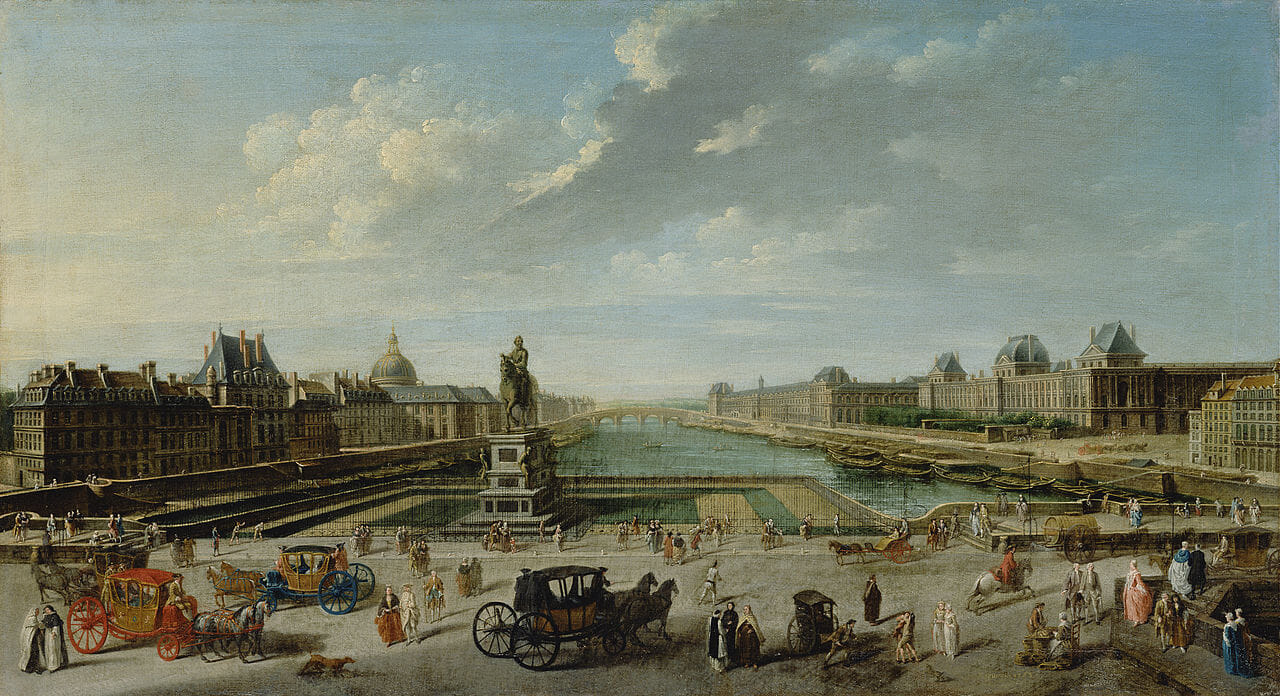For nearly 30 years, beginning in 1761, Franz Joseph Haydn was employed as kapellmeister at the Esterházy court. Now dubbed the “father of the symphony” as well as the string quartet, the innovative Haydn worked in the splendid isolation of the Austrian aristocratic palace. In 1779, he renegotiated his contract to allow for the sale of his music to outside patrons. Widespread fame and prestigious international commissions ensued.
In 1784, Haydn received a commission from French nobleman Comte d’Ogny to write six “grand symphonies” for the newly established public concert series Paris Concerts de la Loge Olympique. The orchestra at the composer’s disposal included some of Europe’s best musicians. While the excellent Esterházy court orchestra averaged 22 musicians, including a 15-piece string section, “the Paris orchestra had more than 40 violins, ten contrabasses and four times the number of wind instruments.” (joseph-haydn.art)
Describing the six “Paris” Symphonies (Nos. 82-87), commentator Charles Rosen wrote, “There is not a measure, even the most serious, of these great works which is not marked by Haydn’s wit; and his wit has now grown so powerful and so efficient that it has become a sort of passion, a force at once omnivorous and creative.”
Numerically the last of the set, Symphony No. 87 in A Major was the first of the “Paris” symphonies to be composed. It is bright, exhilarating, and festive music filled with drama, humor and surprise. The first movement (Vivace) bursts forth with exuberance at full speed without a slow introduction. A whirlwind of conversing instrumental voices, the adventurous development section arrives at a cadence in distant G-sharp major, followed by a long, mysterious pause.
Moving to D major, the second movement (Adagio) begins with a serene and majestic theme. The solo flute and oboe engage in an extended musical dialogue, with the bassoon joining in occasionally. It is a virtual Sinfonia concertante.
The third movement (Minuet) is not as much a stately dance as a display of virtuosity in which the woodwind instruments take center stage. In the trio section, the solo oboe rises to a high “E.”
Unfolding in sonata form based on a single theme, the Finale (Vivace) charges forward at exhilarating breakneck speed, bringing the Symphony to a sunny and joyful conclusion.
This performance, recorded on May 19, 2019, features Kammerorchester Basel, led by conductor Giovanni Antonini:
Featured Image: “A View of Paris from the Pont Neuf” (1763), Nicolas-Jean-Baptiste Raguenet

